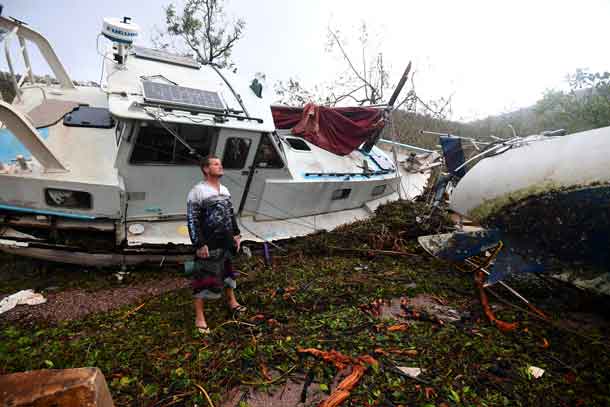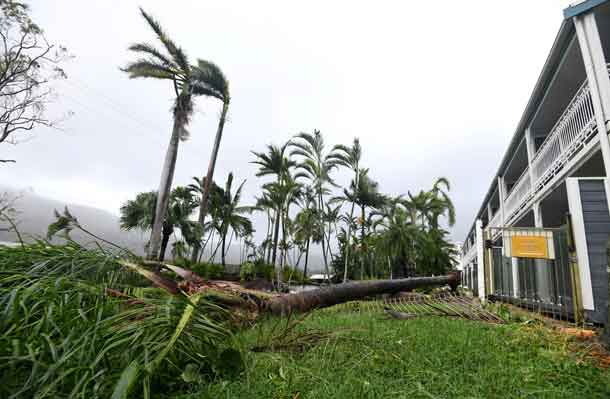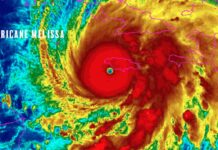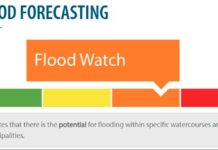

By Tom Westbrook and Benjamin Weir
SYDNEY (Reuters) – Australian authorities told 40,000 people to evacuate to higher ground on Thursday as a storm system generated by a powerful cyclone that pummelled the northeast two days ago swept down the coast with heavy rain.
Cyclone Debbie hit as a category four storm in the north of tropical Queensland state on Tuesday, smashing tourist resorts, bringing down power lines, flattening canefields and shutting down coal mines.
Driving rain fell most heavily on Thursday in hinterland and coastal areas either side of the state capital, Brisbane.
“This severe weather system that began with Cyclone Debbie and is tracking down the coast is causing havoc across our state,” Queensland Premier Annastacia Palaszczuk told reporters in Brisbane.
The cyclone was downgraded to a tropical low depression on Wednesday but on Thursday was driving squalls with torrential rain across a 1,200-km (745-mile) stretch of Australia’s east coast, swelling rivers, causing flash floods and prompting authorities to tell 40,000 people to evacuate.
In Lismore in the north of neighbouring New South Wales state, the State Emergency Service order 7,000 residents in low-lying areas to leave after forecasts predicted the town’s worst flood in nearly 20 years.

A levee protects the rural hub in the Northern Rivers region of New South Wales, home to at least 25,000 people, but most of those downtown planned to seek higher ground, Geoff Baxter, a barman at the Richmond Hotel told Reuters.
“We’re clearing out the pub, mate, and closing it up. All the shops got closed, everyone’s clearing up their cellars,” he said.
Further north, Queensland closed more than 2,000 schools as sustained heavy rainfall brought flash floods to the Gold Coast tourist area and Mackay further north.
In the cyclone-hit zone further north still, military helicopters, ferries and planes brought hundreds of holidaymakers stranded on resort islands in the storm’s path to the mainland, where tens of thousands more people were without power.
Resorts along the world-famous Great Barrier Reef and the Whitsunday coast bore the brunt of the storm with wind gusts stronger than 260 kph (160 mph).
“It’s kind of chaos down here,” Jon Clements, an architect awaiting evacuation from Hamilton Island, told Reuters. “I think there’s probably three times the number of people they can put on aeroplanes at the moment down there.”
At nearby Daydream Island, where water supplies had run low since the storm, troops brought food, fuel and water while helicopters carried sick guests to the mainland.
The resort will be closed for at least a month for repairs, management said in a statement, as tourism operators statewide reported cancelled bookings and anticipated a long-term hit to trade.
“That’s the kind of collateral damage we suffer sometimes in our industry,” Queensland Tourism Industry Council chief executive Daniel Gschwind told Reuters.
In the Bowen Basin, the world’s single largest source of coal used to make steel, major miners Glencore and BHP said they were still assessing the extent of any disruption to shipments.
All four coal rail networks run by operator Aurizon were closed, alongside its road and rail operations from the Bowen Basin to Brisbane. Ports at Abbot Point, Hay Point and Mackay also shut, but did not report extensive damage.
Of the smaller miners, Yancoal had called force majeure on its Middlemount mine.
About 2,500 insurance claims have been filed but Queensland’s top two insurers, Suncorp Group Ltd and RACQ, said it was too early to put a dollar figure on the damage.
Hundreds of hectares of sugarcane crops were flattened, but Wilmar on Thursday restarted sugar mills at Proserpine and Sarina.
One female tourist was killed in a car crash on Monday that police said was due to wild weather as Cyclone Debbie approached. Another two people were injured as the storm passed through.
(Additional reporting by Melanie Burton in MELBOURNE; Editing by Jane Wardell and Paul Tait)






